Related Research Articles

Rockstar Games UK Limited is a British video game development company and a studio of Rockstar Games based in Edinburgh. The company was founded as DMA Design in Dundee in 1987 by David Jones, soon hiring former classmates Mike Dailly, Russell Kay, and Steve Hammond. During its early years, DMA Design was backed by its publisher Psygnosis, primarily focusing on Amiga, Atari ST and Commodore 64 games. During this time, they created successful shooters such as Menace and Blood Money, but soon turned to platform games after the release of Lemmings in 1991, which was an international success and led to several sequels and spin-offs. After developing Unirally for Nintendo, DMA Design was set to become one of their main second-party developers, but this partnership ended after Nintendo's disapproval of Body Harvest.
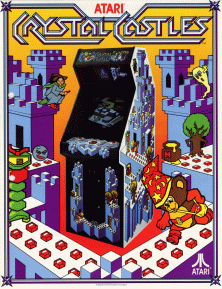
Crystal Castles is an arcade game released by Atari, Inc. in 1983. The player controls Bentley Bear who has to collect gems located throughout trimetric-projected rendered castles while avoiding enemies, some of whom are after the gems as well.
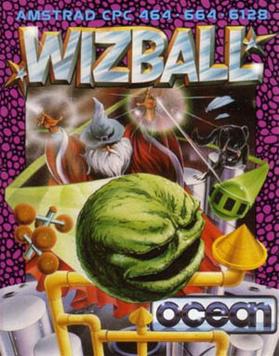
Wizball is a horizontally scrolling shooter written by Jon Hare and Chris Yates and released in 1987 for the Commodore 64 and later in the year for the ZX Spectrum and Amstrad CPC. Versions for the Amiga and Atari ST were released in the following year. Wizball was also ported to IBM PC compatibles and the Thomson MO5.

Zzap!64 was a computer games magazine covering games on the Commodore International series of computers, especially the Commodore 64 (C64). It was published in the UK by Newsfield Publications Ltd and later by Europress Impact.

Underwurlde is a 1984 action-adventure platform video game in the Sabreman series by Ultimate Play the Game for the ZX Spectrum and Commodore 64. The player controls the adventurer Sabreman as he jumps between platforms in a castle and its caverns to find an escape past the exit guardians. Underwurlde features about 600 flip screen areas. Unlike other games of its time, Sabreman is not injured when touched by enemies and is instead knocked backwards. Underwurlde is the second game in the series, between Sabre Wulf and Knight Lore, and released shortly before the latter for the ZX Spectrum in late 1984. Another developer, Firebird, ported the game to the Commodore 64 the next year.
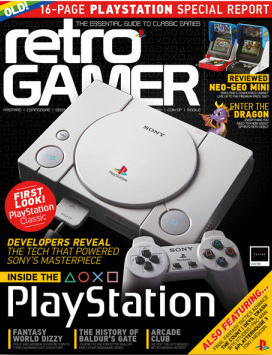
Retro Gamer is a British magazine, published worldwide, covering retro video games. It was the first commercial magazine to be devoted entirely to the subject. Launched in January 2004 as a quarterly publication, Retro Gamer soon became a monthly. In 2005, a general decline in gaming and computer magazine readership led to the closure of its publishers, Live Publishing, and the rights to the magazine were later purchased by Imagine Publishing. It was taken over by Future plc on 21 October 2016, following Future's acquisition of Imagine Publishing.

Shoot-'Em-Up Construction Kit is a game creation system for the Commodore 64, Amiga and Atari ST created by Sensible Software and published by Outlaw in 1987. It allows the user to make simple shoot 'em ups by drawing sprites and backgrounds and editing attack patterns. The advertising promoted the Kit with the phrase "By the programmers of Wizball and Parallax".

Labyrinth: The Computer Game is a 1986 graphic adventure game developed by Lucasfilm Games and published by Activision. Based on the fantasy film Labyrinth, it tasks the player with navigating a maze while solving puzzles and evading dangers. The player's goal is to find and defeat the main antagonist, Jareth, within 13 real-time hours. Unlike other adventure games of the period, Labyrinth does not feature a command-line interface. Instead, the player uses two scrolling "word wheel" menus on the screen to construct basic sentences.
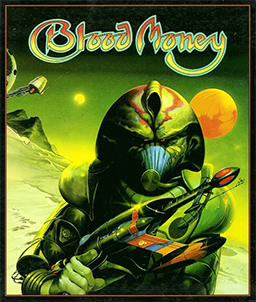
Blood Money is a side-scrolling shooter video game developed by DMA Design and published by Psygnosis in 1989 for the Amiga, Atari ST, and MS-DOS. A Commodore 64 version followed in 1990. The game is set in four different locations on a planet, where the player must fight off enemies and bosses.
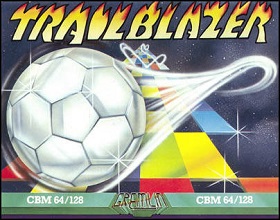
Trailblazer is a racing video game developed by Mr. Chip Software and published by Gremlin Graphics for the ZX Spectrum, Commodore 64, Atari 8-bit family, Amstrad CPC and Commodore 16/Plus/4 in 1986. It was ported to the Amiga and Atari ST.
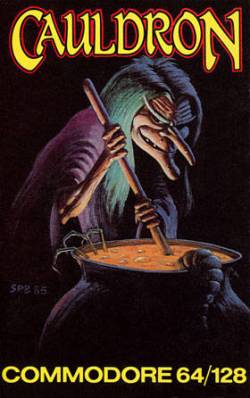
Cauldron is a video game developed and published by British developer Palace Software in 1985 for the ZX Spectrum, Commodore 64, and Amstrad CPC home computers. It contains both platform game and horizontally scrolling shooter sections. Players control a witch who aims to become the "Witch Queen" by defeating an enemy called the "Pumpking".

Spindizzy is an isometric video game released for several 8-bit home computer formats in 1986 by Electric Dreams Software. It combines action and puzzle game elements. Players must navigate a series of screens to explore a landscape suspended in a three-dimensional space. Development was headed by Paul Shirley, who drew inspiration from Ultimate Play the Game games that feature an isometric projection.

Julian "Jaz" Rignall is a writer and editor. He has also produced content for corporate websites such as GamePro Media, publisher of GamePro magazine and GamePro.com, marketing collateral and advertising campaigns.

Sanxion is a horizontally scrolling shooter developed by Stavros Fasoulas for the Commodore 64 and published in 1986 by Thalamus Ltd. It was the first game released by Thalamus. A ZX Spectrum port followed in 1989. Fasoulas also wrote Delta and Quedex.

Beach Head II: The Dictator Strikes Back is a 1985 video game for the Commodore 64, a sequel to Beach Head, developed and published by Access Software. It was designed by Bruce Carver and his brother, Roger, and was released for the Amstrad CPC, Apple II, Atari 8-bit family, Commodore 64, and ZX Spectrum.
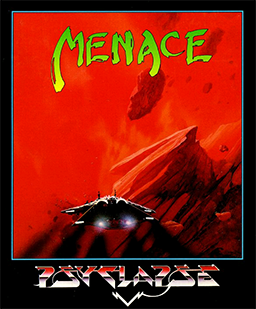
Menace is a horizontally scrolling shooter developed by DMA Design and published by Psygnosis. It was originally released for the Amiga in 1988, and was ported for the Atari ST, Commodore 64, and MS-DOS in 1989. The game is set on the planet of Draconia, where players are tasked with destroying the planet's defence mechanisms in order to kill the harmful creatures.

Light Force is a 1986 vertically scrolling shooter designed by Greg Follis and Roy Carter, developed by their company Gargoyle Games, and published under their Faster Than Light imprint. It was released for the Amstrad CPC, Commodore 64, and ZX Spectrum platforms.

The Flintstones is a 1988 video game based on the 1960s television series The Flintstones. The game was developed by Teque Software Development and published by Grandslam Entertainments. The game was released in Europe in 1988, for Amiga, Amstrad CPC, Atari ST, Commodore 64, MSX, and ZX Spectrum. A version for the Sega Master System was released in 1991.

Denki Blocks! is a puzzle video game developed by Denki and originally released in 2001 by Rage Games for Sky Gamestar and the Game Boy Color and Game Boy Advance. In the game, players manoeuvre different coloured blocks around a grid to join those of the same colour together. The game features versus modes for multiple players. Denki Blocks! was ported to the PlayStation Portable in 2011 by Tiger Games, and to Android the same year and iOS in 2010.
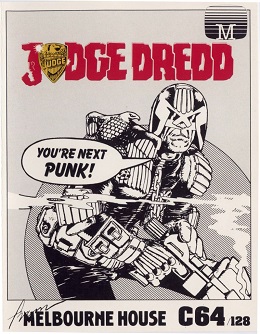
Judge Dredd is a platform shoot 'em up video game based on the character of the same name. It was developed by Beam Software and published by Melbourne House. It was released in Europe in 1986, for Commodore 64 and ZX Spectrum.
References
- ↑ "The ZZAP! Reviewers". Zzap!64, Issue 2 (republished at gamebase64.com). June 1985. Retrieved 19 October 2011.
- 1 2 "The Denki Difference: how one small studio is bringing back the spirit of DMA Design..." The Guardian Games blog. 30 January 2009. Retrieved 19 October 2011.
- ↑ https://uk.linkedin.com/in/garypenn [ self-published source ]
- 1 2 Stuart, Keith (2 February 2009). "Gary Penn on the rules of game design". The Guardian Games blog. Retrieved 19 September 2011.
- ↑ "Gamasutra - The Replay Interviews: Gary Penn". 31 January 2011.
- ↑ "Games Media Awards". The Guardian Games blog. 12 October 2007. Retrieved 19 October 2011.
- ↑ Wilson, Jonathan; Osborn, George; Smyth, Rob; Fryer, Rupert; Young, James (1 December 2016). The Blizzard - The Football Quarterly: Issue Twenty Three (in Danish). Blizzard Media Ltd.